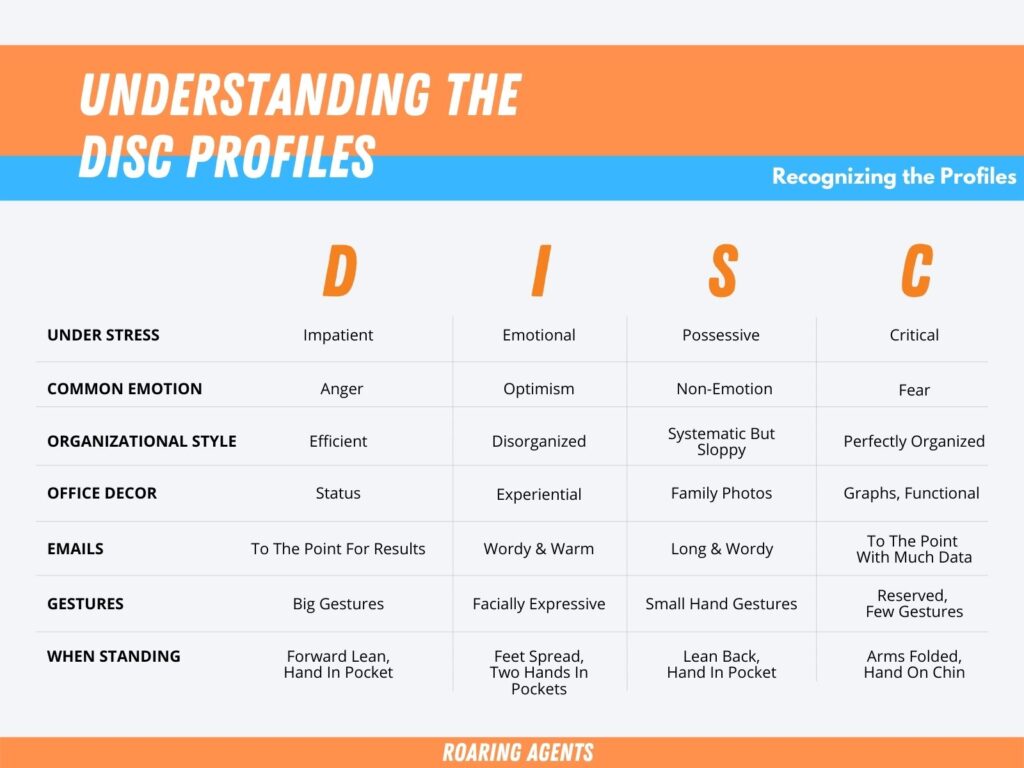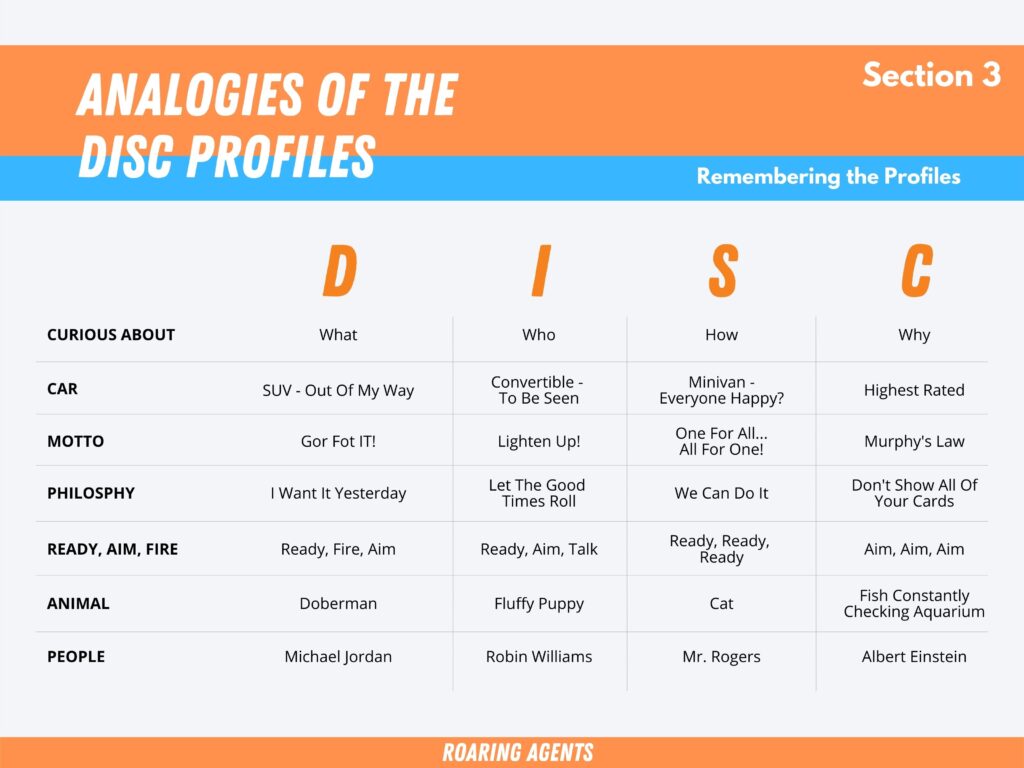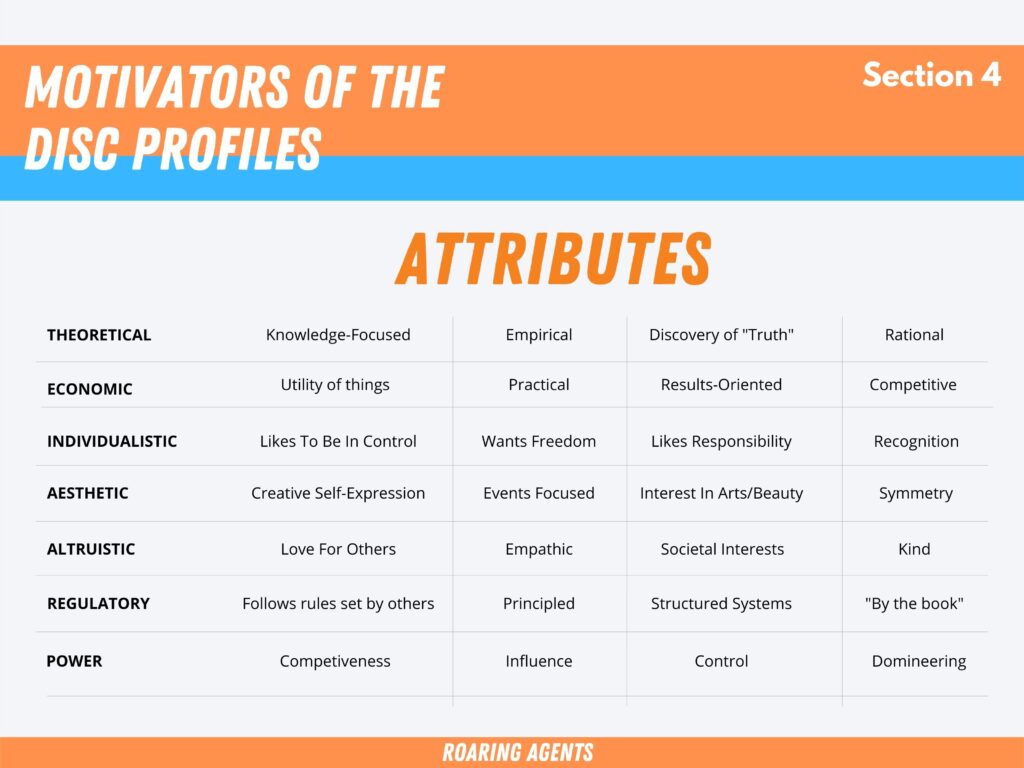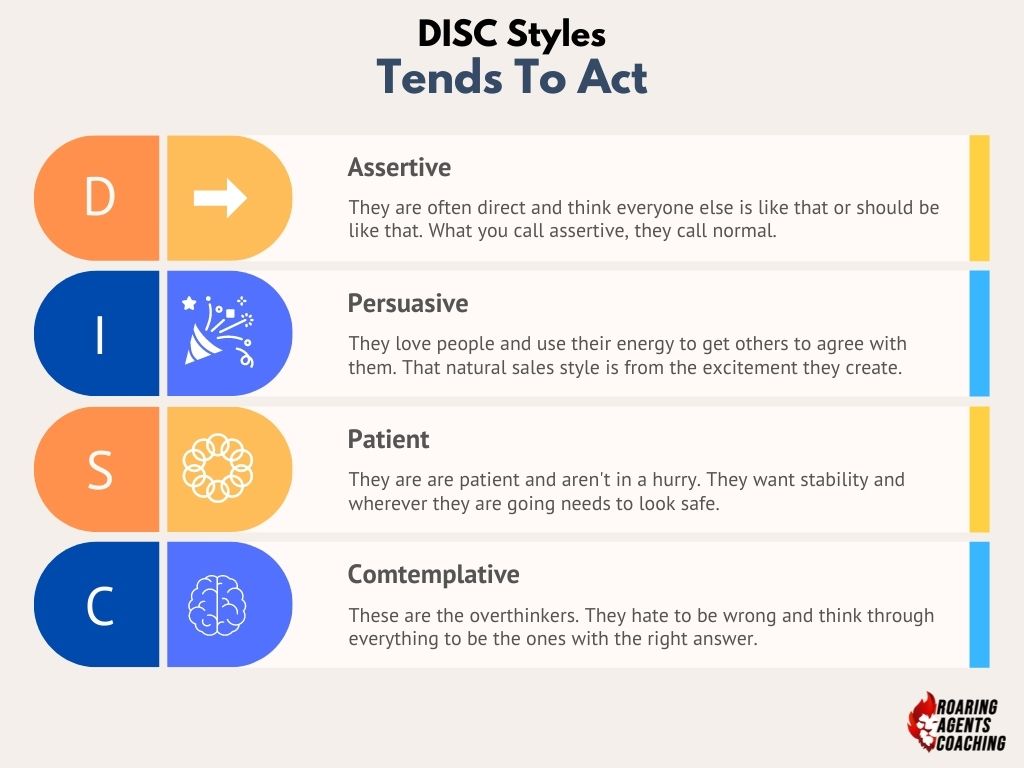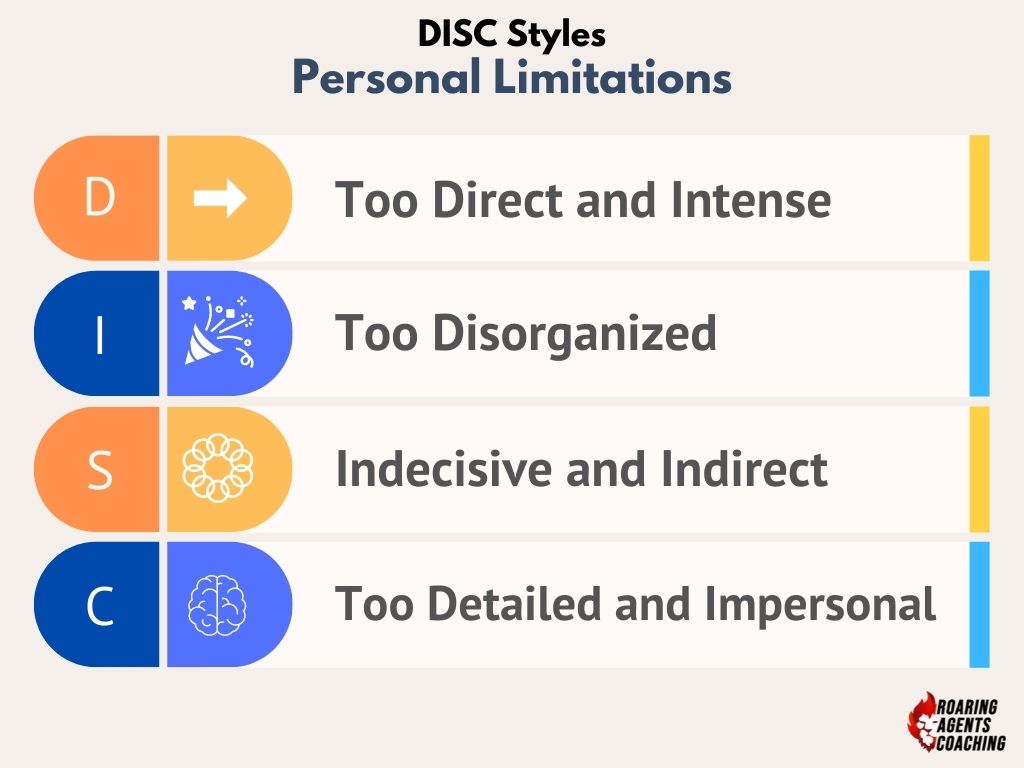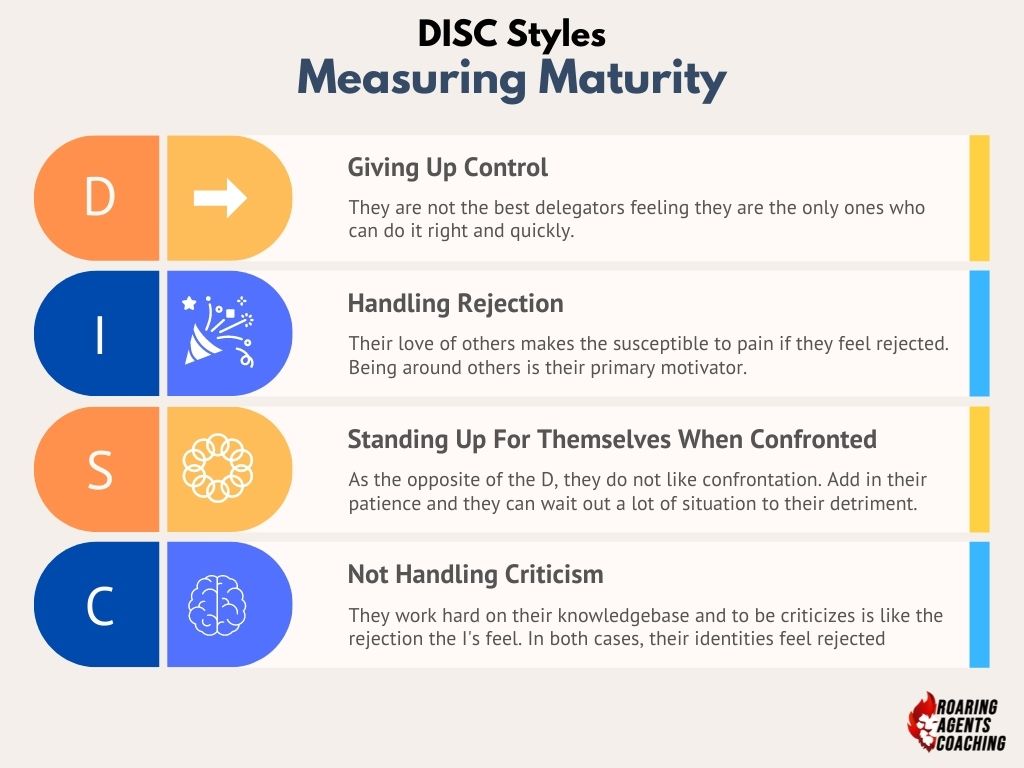
The DISC Behavioral Assessment is a popular tool used by many businesses to better understand their employees, assist in hiring decisions, and help them connect with their clients. While it’s impossible to fully summarize a person with just a letter from an assessment, the DISC provides a useful shorthand to help you approach people more effectively. By understanding the DISC, you can connect with a wider range of people, and this knowledge can be applied to friends, strangers, and even children. It’s like having a user manual for the world.
Introducing the DISC early in these lessons allows us to establish a common language when discussing clients and agents. This shared understanding will help us apply various tools, tactics, and strategies to different personalities more effectively.
A Breakdown of the DISC:
High D profiles are focused on getting things done quickly. They’re decisive and can change their minds rapidly, which may confuse others, particularly when they’re in leadership positions. High D individuals dislike being told what to do, as they’re used to being the decision-makers. Giving them options allows them to feel in control, as they fear losing that control.
High I profiles prioritize people and social interactions. They enjoy talking and being the center of attention. It can be difficult to determine their preferences, as they tend to adapt their behavior to please others, at least temporarily.
High S profiles value stability and security. They’re often caring and selfless, prioritizing others’ needs above their own. They can be compliant but may eventually rebel if pushed too far. High-pressure sales tactics often work on High I and High S personalities because they want to be liked.
High C profiles seek information and accuracy. They’re cautious in their decision-making and require ample data to support their choices. A high D pushing a high C to make a decision quickly is usually counterproductive. If a high C requests information, it’s important to provide it; otherwise, they may lose trust and look elsewhere for help. These individuals are often found in engineering or similar fields.
Typically, people will have two primary characteristics that are more prominent than the others. Neighboring letters tend to complement one another. It’s important to remember that individuals may adjust which characteristic they lean on based on the situation. While the DISC provides valuable insight into people’s personalities, it’s still a shorthand method, and two people with identical assessments may behave differently.
Below are two sample reports.
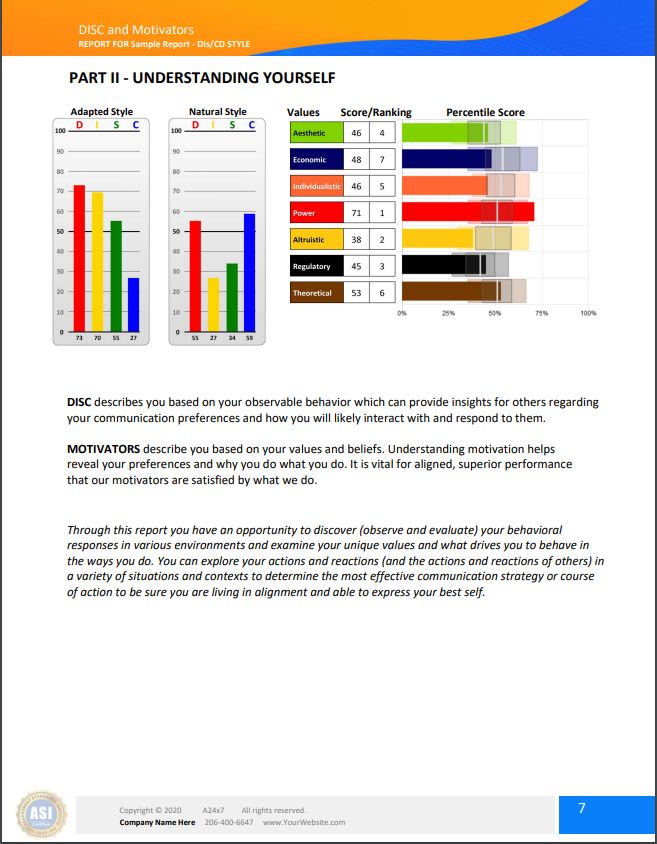
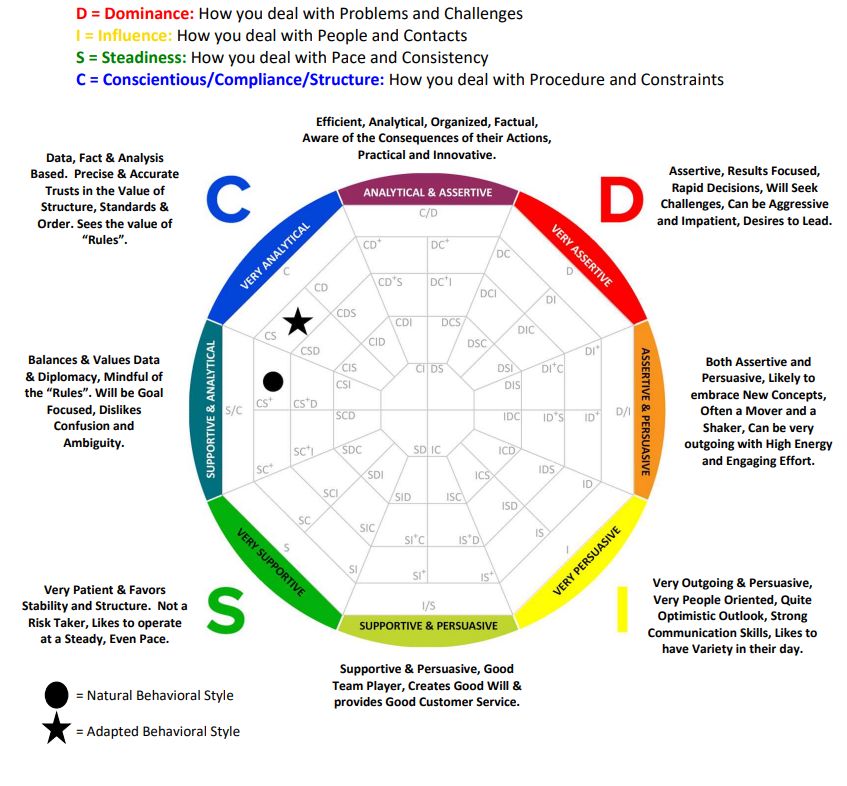
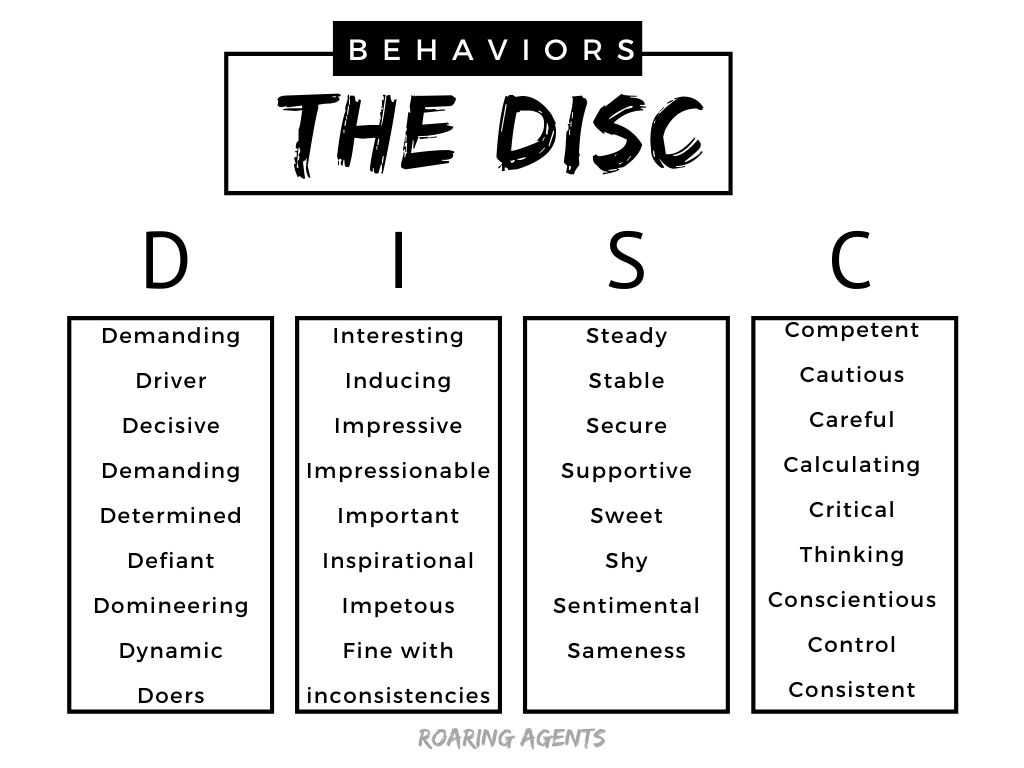
The DISC assessment is not something to be glanced at and forgotten. It requires consistent study and application in order to truly benefit from its insights. As Mike Tyson’s coach once said, “Everyone has a plan until they get punched in the mouth.” This quote highlights the importance of relying on well-practiced habits during times of stress or pressure. Similarly, another saying goes, “We don’t rise to the level of our expectations, we fall to the level of our training.” If you don’t study and practice the DISC principles, you’ll revert to your usual habits when under pressure, which may include treating people as you would like to be treated, rather than adapting to their individual needs.
In our later discussions on negotiations, we’ll explore Chris Voss’s concept of the three “yes’s” – confirmation, commitment, and counterfeit. The high I personality is more likely to give a confirmation yes, acknowledging that they’ve heard what was said rather than necessarily agreeing with it. High S and high C individuals might give a counterfeit yes to escape an uncomfortable situation.
The DISC assessment can also be useful in hiring and building a well-rounded team. High D individuals often excel as listing agents, as they can handle the difficult conversations that come with the role. High I personalities make great buyer’s agents, as their social nature enables them to connect with people easily throughout the buying process. High S individuals are often suited for administrative roles, as they work diligently to support others, sometimes to the point of burnout. High C personalities excel in organizational roles and rule enforcement, making them valuable principal brokers.
It’s important to remember that the DISC assessment is not a rigid framework, and individuals may perform well in roles that don’t necessarily align with their dominant traits. Understanding your own DISC profile can help you recognize your strengths and weaknesses, allowing you to address potential challenges on your path to success. By studying and applying the principles of the DISC assessment, you can become more adaptable and effective in your professional and personal relationships.
Exercise: If you don’t know your assessment, you can look up free ones that might give you an idea of your DISC or get a paid one that goes really deep and will likely be more accurate. Then look at three people in your life, making two of them clients if you have them, and figure out what they may be an why. Then assess who you might differently approach them.
